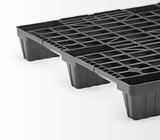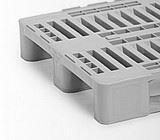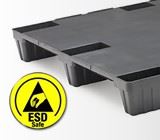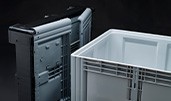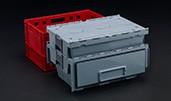Therefore, one of the most important objectives of palletizing is to ensure the stability of the loading unit. Cargo unit is understood to mean the assembly of the packaged and palletized products, constituting a whole and whose objective is that it be resistant and stable throughout the logistic chain.
Incorrect palletizing can cause damage to the products transported, pose a risk for handling, reduce safety in the operations, increase rejects in automatic lines, produce losses and product losses throughout the different logistical stages and Thus increasing storage and transport costs.
There are two ways to generate a stable load:
- The first one, through the overlapping of the boxes that contain the pallet or stacking them in columns depending on the stability that the load presents. Also, it is imperative to ensure that the load is correctly anchored to the pallet.
- The second, through the use of packaging elements that allow the merchandise to be fixed to the pallet, for example: strip, film, etc.
The ultimate objective of a correct disposition of the merchandise and the use of systems or other elements for its retention is to generate a compact, stable and properly consolidated load. It is of vital importance to ensure that it behaves as a whole, and that, therefore, there are no loose elements inside the load that are not properly anchored to eachother, as well as the pallet itself.
It is also important to avoid excessive heights, since the unit of load is always manipulated by its base (the pallet) and the increase in the height of the point of balance of the load assembly can generate safety incidents due to the inertia due to the movements During handling or transport. A recommended height of palletized load is 1.45 m *, although depending on the sector and product that contain these heights vary.
Currently, Nortpalet, offers additional or complementary solutions for its plastic pallets that help to improve the stability and / or improve the retention of the load, such as:
- Non-slip surfaces.
- Stoppers on the perimeter of the pallet with the option of being customizable at different heights.
- Rubber on the board that improves the grip of the merchandise on the surface and avoids sliding the pallet in handling with forklifts and pallet trucks.
- Rubber on the lugs that prevents sliding of the plastic pallet in contact with metal surfaces.
- Non-slip bands, a solution more flexible than the previous ones that allows adapting the bands to the needs of the customer and of the loads. They improve load retention and prevent sliding of the load on the pallet, especially in cases where the load does not occupy 100% of the surface of the pallet.
The stability of the load, the correct anchorage between the different elements, as well as the pallet, its uniformity and optimum height will allow a correct manipulation, optimize the storage and transport, reduce the risk of breakages, as well as avoid situations of load opening During their handling and / or storage.
* Height recommended by AECOC for the fast moving goods sector as a general standard, establishing several exceptions.

